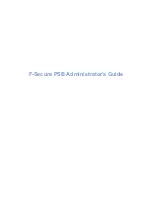
CHAPTER 23. LIVE INSTRUMENT REFERENCE
365
The Color knob sets the frequency of the noise component. At higher values, there are less
low frequencies in the noise. This parameter has no effect if Noise is set to 0.
The Mallet section can be toggled on or off via the switch next to its name.
The Noise Section
Collision's Noise
Section.
The Noise section can be used instead of, or in addition to, the Mallet section. Like the
Mallet, the Noise section produces Collision's initial impulse sound. But Noise also produces
a white noise component, which is then fed into a multimode lter and a dedicated envelope
generator.
Volume controls the overall output level of the Noise section, and can be modulated by pitch
and velocity by adjusting the K (Key) and V (Velocity) sliders below the knob, respectively.
To the right are the lter controls. The type chooser allows you to choose between low-pass,
high-pass, and two types of band-pass lters. Filter cutoff and resonance can be adjusted
by the sliders above the lter display, or by dragging within the display itself. In BP mode,
the second slider adjusts resonance, while in LP+HP mode, it adjusts bandwidth. The lter
frequency can also be modulated by note pitch, velocity or the envelope generator, via the
K, V and E sliders below the display.
The envelope generator is a standard ADSR (attack, decay, sustain, release).
The attack time
how quickly Noise reaches full volume
is set with the A (Attack) slider,
while the time it takes for the envelope to reach the sustain level after the attack phase is
set by the D (Decay) slider.
The S (Sustain) slider sets the level at which the envelope will remain from the end of the
















































